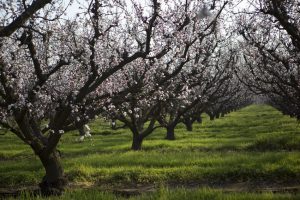This author can be reached via twitter @sukyboiii and via email: Suky Cheema.
Follow The Feather via Twitter @thefeather, Instagram @thefeatheronline and Facebook @thefeatheronline.


The downpour of rain that occurred last month in the Central Valley affected the entire community. From farmers to buyers, they have been incredibly affected by the steady decline in crop production throughout the years.
The Central Valley is the biggest producer of foods such as grapes, almonds, tomatoes, etc. With 12.3 percent of jobs in the Valley coming directly from agriculture, citizens rely heavily on the cultivation production.
The California drought started on January 2012. It severely affected farming families across the valley. Many crops have been damaged throughout the entirety of the drought which ended on April 2017.
According to USGS California Water Science Centers website, there are many issues that come with a drought. Some of which include water quality degradation, surface and groundwater level declines, and land subsidence.
The Central Valley produces over 360 products per year via the House Committee on Natural Resources. It is the primary source for foods such as tomatoes, almonds, grapes, cotton and apricots, to name a few.
With these recent weather changes caused by the season switch from summer to fall, the Central Valley was bound to have some problems centered around its crops. Less production from the Central Valley equals fewer food products for the rest of the state and country.
Years of man-made droughts plus this year’s lack of rainfall have increased food prices around the nation. With fewer people willing to work in the agriculture field, some ask themselves how will they ever get the foods that they eat and store into their bodies for energy on a daily basis.
The state of California has issued many organizations and proposals to the citizens to try and preserve water. With campaigns that talk about taking shorter showers and keeping your sinks off while you’re brushing, the state is trying to help the Central Valley as much as they can.
However, people do not seem to care about the drought, because until their water is completely gone, there is no need to fear. Central Valley citizen Gurpal Singh knows that they’re in a middle of a drought and thinks that the people should do their part in trying to prevent the agriculture system from going down the drain.

“I think it is crucial to save as much water as we can,” Singh said. “I have seen various amounts of commercials and heard from my fellow workers on how we as citizens need to be more careful with how we use our water. Long showers are unnecessary and having your sprinklers on an entire day is pointless.
“I feel like we as a community have to inform our families and work together to help preserve water,” Singh continued. “If we want to help the Central Valley with their agricultural needs, we as regular everyday citizens of the Central Valley need to conserve enough water to help those in the agriculture scene.”
With the drought ending almost 8 months ago, the Central Valley is looking to get back to it’s best. The state of California needs heavy production from the Valley to keep up with food market prices and demands.
For more information about California’s past droughts, read Recent weather aids California drought.
This author can be reached via twitter @sukyboiii and via email: Suky Cheema.
Follow The Feather via Twitter @thefeather, Instagram @thefeatheronline and Facebook @thefeatheronline.